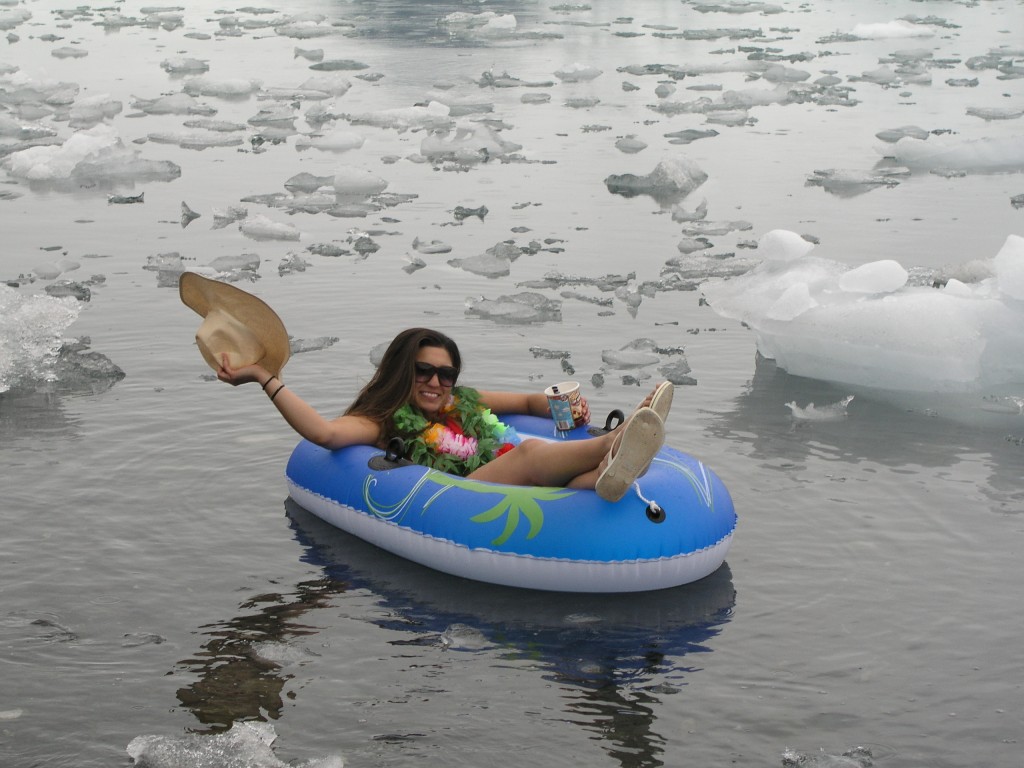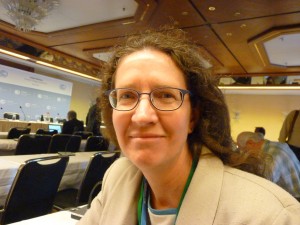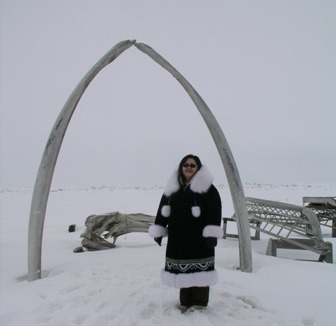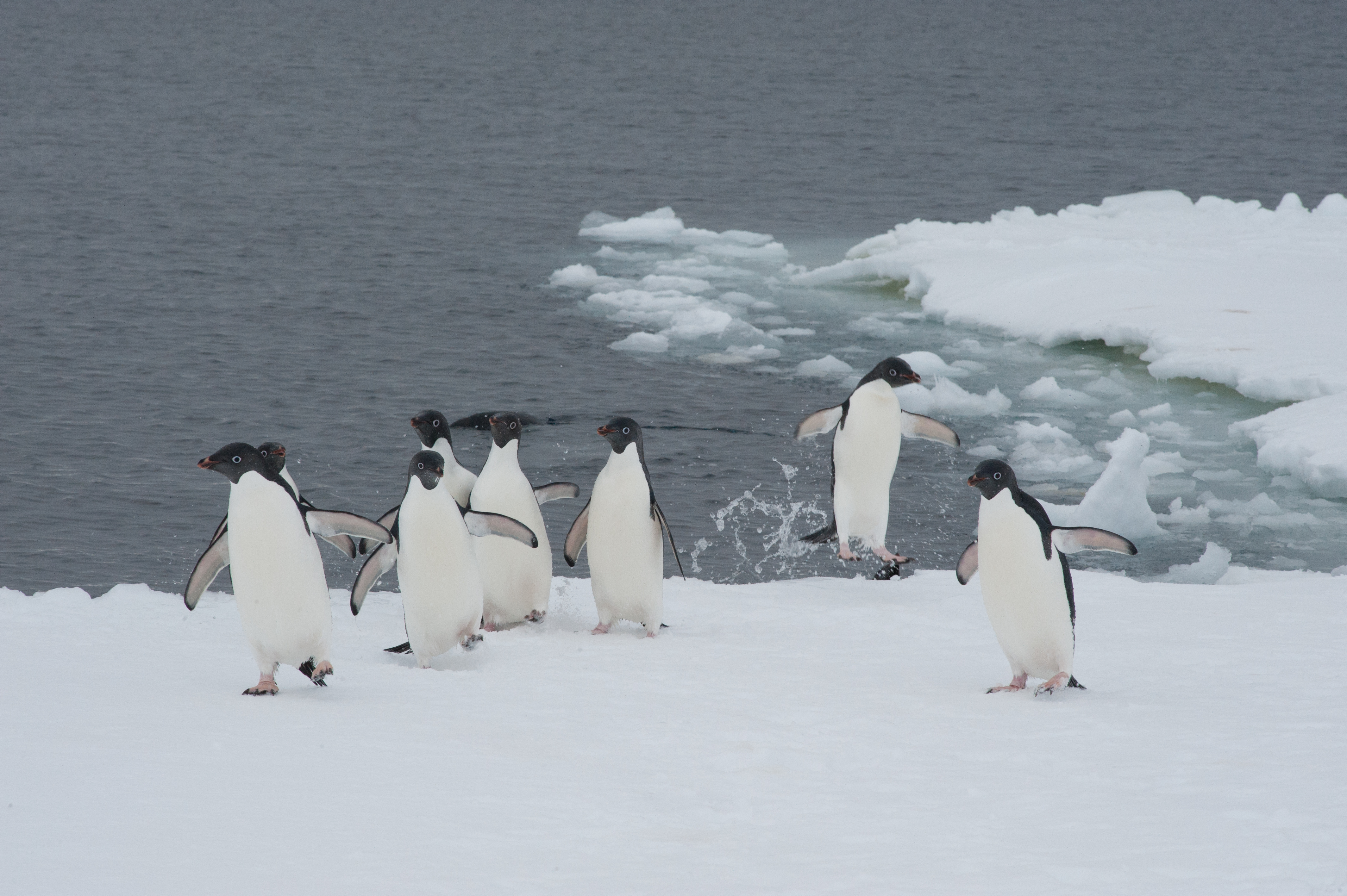Icy hotspots in focus at climate talks?
With western Europe sweltering in a record-breaking heatwave, climate scientists are meeting in Paris this week for what is regarded as the last major climate science conference before the key COP 21 in Paris at the end of this year. “Our Common Future under Climate Change” wants to be “solutions-focused”, but starts off with a resumé of the state of science as a basis.
One of the topics on the wide agenda is, of course, the cryosphere, with scientists reporting on rapid changes in the Arctic ice and permafrost, and worrying developments in the Antarctic.
As conference after conference works to prepare a new World Climate Agreement, to take effect in 2020, the International Cryosphere Climate Initiative (ICCI) is concerned that the INDCSs, or Intended Nationally Determined Contributions, i.e. the climate action countries propose to take are not in line with keeping global warming to the internationally set target of a maximum two degrees centigrade. Scientists tell us this itself would already have major impacts on the world’s ice and snow.
Climate pledges way too low
Pam Pearson, the founder and director of ICCI, told journalists during a recent visit to Bonn her indication of INDCS so far was that they are ”somewhere between 3.8 and 4.2 degrees”.
Pearson and her colleagues are working hard to make the scientific evidence on climate changes in our ice and snow regions accessible and “must-reads” for the politicians and others who are preparing to negotiate the new agreement at the Paris talks at the end of the year, to replace the Kyoto protocol. She was here in Bonn at the last round of UN preparatory climate talks last month, holding a side event and briefing media and negotiators.
Pearson was part of the original Kyoto Protocol negotiating team. She is a former U.S. diplomat with 20 years’ experience of working on global issues, including climate change. She says she resigned in 2006 in protest over changes to U.S. development policies, especially related to environmental and global issues programmes. From 2007-2009, she worked from Sweden with a variety of organizations and Arctic governments to bring attention to the potential benefit of reductions in short-lived climate forcers to the Arctic climate, culminating in Arctic Council ministerial-level action in the Tromsø Declaration of 2009.
Pearson founded ICCI immediately after COP 15 to bring greater attention and policy focus to the “rapid and markedly similar changes occurring to cryosphere regions throughout the globe”, and their importance for the global climate system.
IPCC reports already out of date
At the briefing in Bonn a couple of weeks ago, she said:
“Certainly through AR5, (the 5th Assessment Report of the IPCC) the science is available to feed into the negotiations. But I think what we see as a cryosphere organization, participating as civil society in the negotiations – and I think also, very importantly, what the IPCC scientists see – is a lack of understanding of the urgency of slowing down these processes and the fact that they are irreversible. This is not like air or water pollution, where if you clean it up it will go back to the way it was before. It cannot go back to the way it was before and I think that is the most important aspect that still has not made its way into the negotiations”.
Scientists taking part in the event organized by the ICCI in Bonn stressed that a lot of major developments relating especially to Antarctica and to permafrost in the northern hemisphere was not available in time for that IPCC report. This means the scientific basis of AR5 is already way out of date, and that it does not include very recent important occurrences.
Sea ice in decline
Dirk Notz from the Max Planck Institute for Meteorology in Hamburg heads a research group focusing on sea ice and rapid changes in the Arctic and Antarctic.
He told journalists in Bonn: “Over the last 10 years or so we’ve roughly seen a fifty percent loss of Arctic sea ice area, so this ice is currently retreating very, very rapidly. In the Antarctic, some people are talking about the increase of sea ice. Just to put things into perspective: there is a slight increase, but it’s nothing compared to the very rapid loss that we’ve seen in the Arctic.“
The slight increase in sea ice in the Antarctic is certainly not an indicator that could disprove climate warming, as some of a skeptical persuasion would like to have us believe.
“In the Antarctic, the changes in sea ice are locally very different. We have an increase in some areas and a decrease in other areas. This increase in one area of the southern ocean is largely driven by changes in the surface pressure field. So the winds are blowing stronger off shore in the Antarctic, pushing the ice out onto the ocean, and this is why we have more sea ice now than we used to have in the past. Our understanding currently says that these changes in the wind field are currently driven by anthropogenic changes of the climate system,“ said Notz.
He stresses that as far as the Arctic is concerned, the loss of sea ice is very clearly linked to the increase in CO2. The more CO2 we have in the atmosphere, the less sea ice we have in the Arctic.
Changing the face of the planet
Notz stresses the speed with which humankind is currently changing the face of the earth:
“Currently in the Arctic, a complete landscape is disappearing. It’s a landscape that has been around for thousands of years, and it’s a landscape our generation is currently removing from the planet, possibly for a very long time. I think culturally, that’s a very big change we are seeing.”
At the same time, he says the decline in the Arctic sea ice could be seen as a very clear warning sign:
“Temperature evolution of the planet for the past 50 thousand years or so shows that for the past 10 thousand years or so, climate on the planet has been extremely stable. And the loss of sea ice in the Arctic might be an indication that we are ending this period of a very stable climate in the Arctic just now. This might be the very first, very clear sign of a very clear change in the climatic conditions, like nothing we’ve seen in the past 10,000 years since we’ve had our cultures as humans.”
Simulations indicate that Arctic summer sea ice might be gone by the middle of this century. But Notz stresses that we can still influence this:
“The future sea ice loss both in the Arctic and the Antarctic depends on future CO2 emissions. A rapid loss of Arctic summer sea ice in this decade is possible but unlikely. Only a very rapid reduction of CO2 might allow for the survival of Arctic summer sea ice beyond this century.”
Antarctic ice not eternal
Whereas until very recently, the Antarctic ice was regarded as safe from climate warming, research in the last few years has indicated that even in that area, some possibly irreversible processes are underway. This relates to land ice rather than sea ice.
Ricarda Winckelmann is a scientist with the Potsdam Institute for Climate Impact research (PIK). She told journalists and climate negotiators at the Bonn talks that Antarctica could be regarded as the “sea level giant”. The global sea level would rise by five metres if West Antarctica’s ice sheet melted completely, 50 metres for the East Antarctic ice sheet.
“Over the past years, a couple of regions in Antarctica have really caught our attention. There are four hotspots. They have all changed rapidly. There have been a number of dynamic changes in these regions, but they all have something in common, and that is that they bear the possibility of a dynamic instability. Some of them have actually crossed that threshold, some of them might cross it in the near future. But they all underlie the same mechanism. That is called the marine ice sheet instability. It’s based on the fact that the bottom topography has a certain shape, and it’s a purely mechanical, self-enforcing mechanism. So it’s sort of driving itself. If you have a retreat of a certain region that undergoes this mechanism, it means you cannot stop it. “
The hotspots she refers to are the Amundsen Basin in West Antarctica, comprising the Pine Island and Thwaites glaciers, which are the fastest glaciers in Antarctica:
“It has been shown in a number of studies last year that it actually has tipped. Meaning it has crossed that threshold, and is now undergoing irreversible change. So all of these glaciers will drain into the ocean and we will lose a volume that is equivalent to about a metre of global sea level. The question is how fast this is going to happen.”
Next comes the Antarctic peninsula, where very recent research has indicated that warm water is reaching the ice shelves, leading to melting and dynamic thinning.
Even in East Antarctica, which was long considered virtually immune to climate change, Winckelmann and her colleagues have found signs that this same mechanism might be at work, for instance with Totten Glacier:
“There is a very recent publication from this year, showing that (…) this could possibly undergo the same instability mechanism. Totten glacier currently has the largest thinning rate in East Antarctica. And it contains as much volume as the entire West Antarctic ice sheet put together. So it’s 3.5 metres worth of global sea level rise, if this region tips”, says the Potsdam expert.
Pulling the plug?
The other problematic area is the Wilkes Basin.
“We found that there is something called an ice plug, and if you pull it, you trigger this instability mechanism, and lose the entire drainage basin. What’s really striking is that this ice plug is comparably small, with a sea-level equivalent of less than 80 mm. But if you lose that ice plug, you will get self-sustained sea level rise over a long period of time, of three to four metres.“
This research is all so new that it was not included in the last IPCC assessment:
“We’ve known that this dynamic mechanism exists for a long time, it was first proposed in the 1970s. But the observation that something like this is actually happening right now is new,” Winckelmann stresses.
Clearly, this is key information when it comes to bringing home the urgent need for rapid climate action.
Pam Pearson stresses that these changes in themselves have a feedback effect, and have an impact on the climate:
“The cryosphere is changing a lot more quickly than other parts of the world. The main focus for Paris is that these regions are moving from showing climate change, being indicators of climate change, to beginning to drive climate change, and the risks of those dynamics beginning to overwhelm anthropogenic impacts on these particular areas is growing as the amount of carbon dioxide in the atmosphere goes up, as the temperature rises.”
Clilmate factor permafrost
This applies in particular to the effect of thawing permafrost. Susan Natali from the US Woods Hole Research Centre is co-author of a landmark study published in Nature in April. She also joined the ICCI event in Bonn:
“Carbon has been accumulating in permafrost for tens of thousands of years. The amount of carbon currently stored in permafrost is about twice as much as in the atmosphere. So our current estimate is 1500 billion tons of carbon permanently frozen and locked away in permafrost. So you can imagine, as that permafrost thaws and even a portion of that gets released into the atmosphere, that this may lead to a significant increase in global greenhouse gas emissions.”
The study was conducted by an international permafrost network. “The goal is to put our current understanding of the processes in permafrost regions into global climate models. The current IPCC reports don’t include greenhouse gas emissions as a result of permafrost thaw”, says Natali.
Permafrost regions make up some 25% of the northern hemisphere land area. The scientists say between 30 and 70 percent of it could be lost by 2100, depending on the amount of temperature rise. There is still a lot of uncertainty over how much carbon could be released, but Winckelmann and her colleagues think thawing permafrost could release as much carbon into the atmosphere by 2100 as the USA, the world’s second biggest emitter, is currently emitting.
The time for action is now
“The thing to keep in mind is that the action we take now in terms of our fossil fuel emissions is going to have a significant impact on how much permafrost is lost and in turn how much carbon is released from permafrost. There is some uncertainty, but we know permafrost carbon losses will be substantial, they will be irreversible on a human-relevant time frame, and these emissions of ghgs from permafrost need to be accounted for if we want to meet our global emissions targets”, says Winckelmann.
The challenge is to convince politicians today to act now, in the interests of the future. Pam Pearson and her colleagues are working to have a synthesis of what scientists have found to date accessible to and understandable for the negotiators who will be at COP21 in Paris in December.
In terms of an outcome, she says first of all we need higher ambition now, in the pledges being made by different countries. The lower the temperature rise, the less the risk of further dynamic change processes being set off in the cryosphere. The other key factor is to make sure there is flexibility to up the targets on a regular basis, without being tied to a long negotiating process. The current agreement draft envisages five year reviews.
“There are a number of cryosphere scientists who actually expect these kinds of signals from cryosphere to multiply, and that there may be some dramatic developments just over the next three to five years, that may finally spur some action”, Pearson says.
Here’s hoping the UN negotiators will not wait for further catastrophic evidence before committing to an effective new climate treaty at the end of this year.
Further reading from my coverage:
Civil Society heats up climate debate
Thicker Antarctic ice – good for the climate?
Antarctic melt could raise sea levels faster
West Antarctic ice sheet collapse unstoppable?
Climate change risk to icy East Antarctica





















Feedback